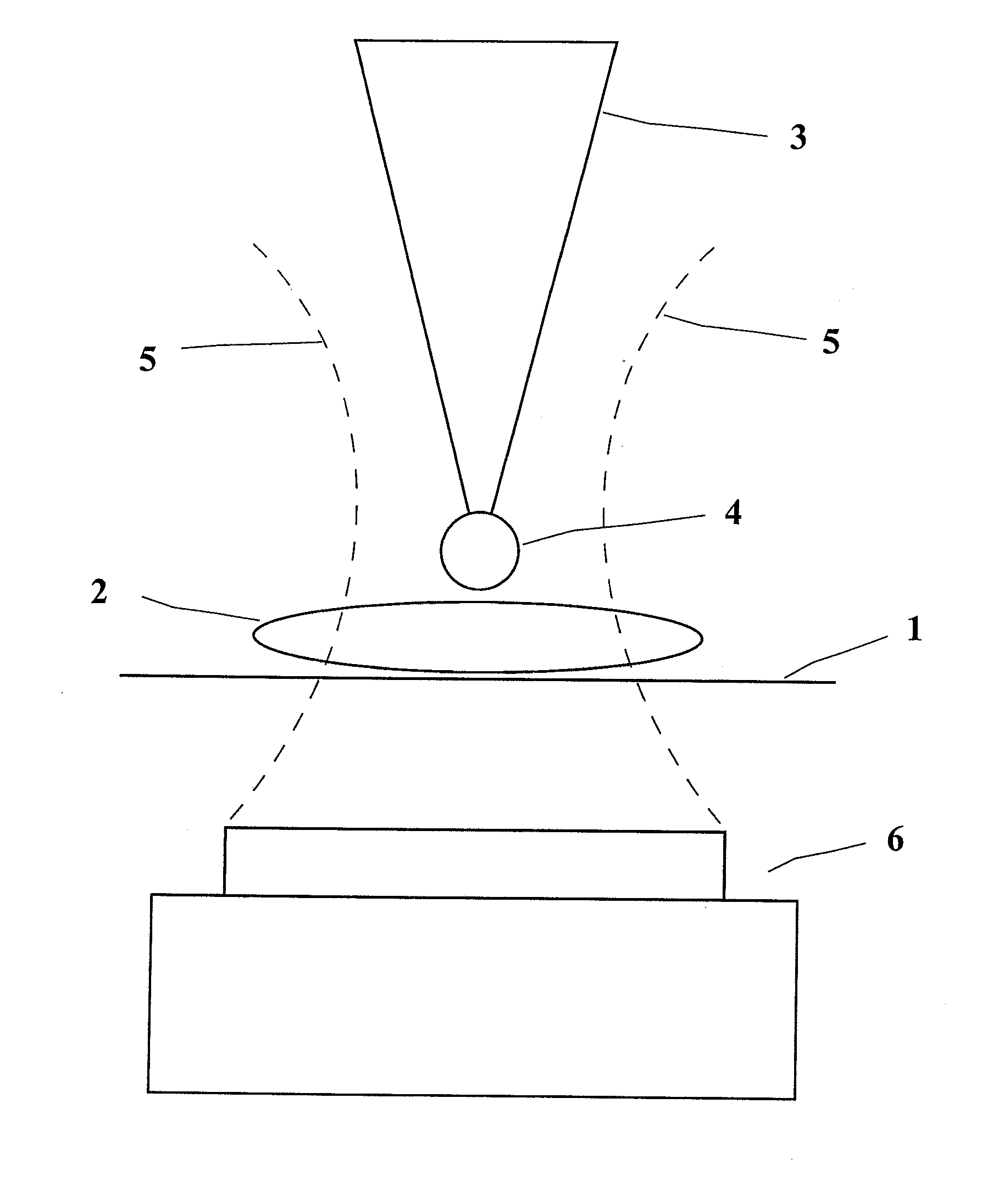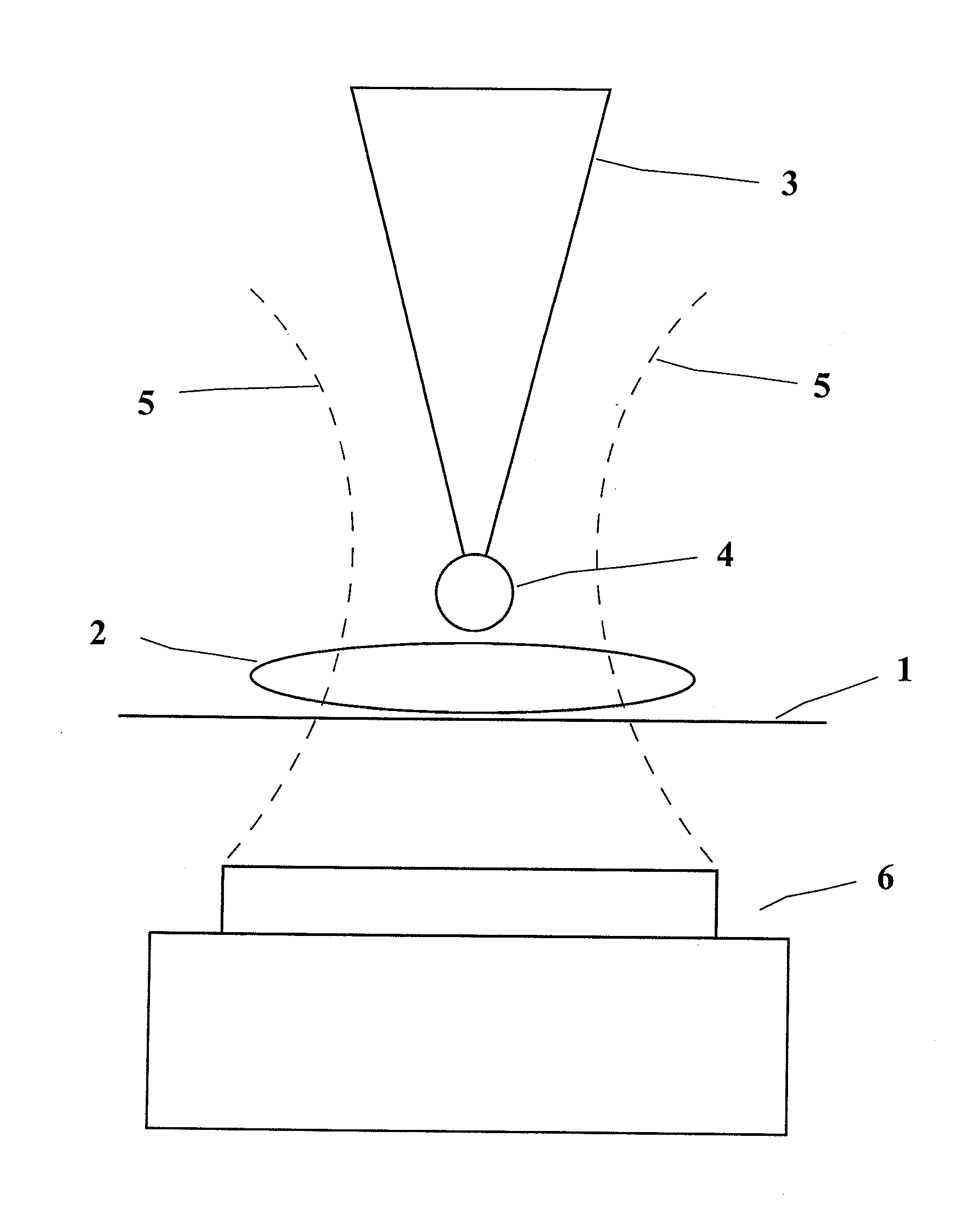Method for identifying individual viruses in a sample
- Summary
- Abstract
- Description
- Claims
- Application Information
AI Technical Summary
Benefits of technology
Problems solved by technology
Method used
Image
Examples
embodiment 1
Detection of Tobacco Mosaic Virus (TMV) in a Plant Sample
[0029]The TMV leads to the economically important mosaic disease of tobacco, but it can also infest other plant families. The virus is particularly stable and can be easily transmitted, e.g. by direct contact between the plants, by plant sap, in some plants by seed and most of all by agricultural methods for handling infected plants.
[0030]To avoid more serious economic damage an exact and quick identification of the virus is necessary.
[0031]For doing this, either pressed plant juice or plant parts (leaves, buds, fruit, trunks, stalks, roots, or similar parts) are used. If plant parts are used, they are lysed mechanically or chemically in a suitable buffer in the first step to release the viruses from the cell structure. Then, the obtained liquid is guided (like the pressed plant juice) through a filter array with decreasing pore size. Afterwards only the filters that catch the virus particles with a size from 15 nm to 400 nm a...
embodiment 2
Detection of the Foot-and-Mouth-Disease Virus
[0032]Foot-and-mouth disease is a highly contagious and compulsorily notifiable disease of cattle and pigs; but goats, sheep and other even-toed ungulates can also be infected. Infections of elephants, hedgehogs, rats and of men are described in the literature, too.
[0033]For example, aphtha liquid, organ homogenates, pharynx mucus samples (probang sample), secretions and cell culture supernatants can be used for identifying the virus. They are transferred to a suitable lysis buffer which leads to release of the viruses from the cells. Afterwards, the liquid obtained in this way is guided through the filter array mentioned in embodiment 1 and the filters of interest are analyzed as described.
embodiment 3
Detection of Influenza Viruses in Air Samples
[0034]In humans, influenza is caused by the influenza virus of type A or B. The infection is often a result of a so called droplet or smear infection. The droplet infection is the medical term for the direct inhalation of expiration droplets (exhalation droplets) of infected persons.
[0035]Contact infection or smear infection with the viruses is caused by highly infectious expiration droplets that have fallen on objects or body surfaces or it is caused, for example, by smeared nasal secretion.
[0036]To identify viruses in an air sample a pre-defined volume of air is filtered in the already described filter array (cf. embodiment 1). Then, the filters are analyzed by means of the method explained above.
PUM
 Login to View More
Login to View More Abstract
Description
Claims
Application Information
 Login to View More
Login to View More - R&D
- Intellectual Property
- Life Sciences
- Materials
- Tech Scout
- Unparalleled Data Quality
- Higher Quality Content
- 60% Fewer Hallucinations
Browse by: Latest US Patents, China's latest patents, Technical Efficacy Thesaurus, Application Domain, Technology Topic, Popular Technical Reports.
© 2025 PatSnap. All rights reserved.Legal|Privacy policy|Modern Slavery Act Transparency Statement|Sitemap|About US| Contact US: help@patsnap.com


